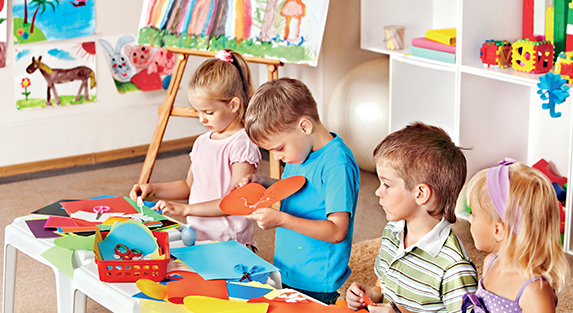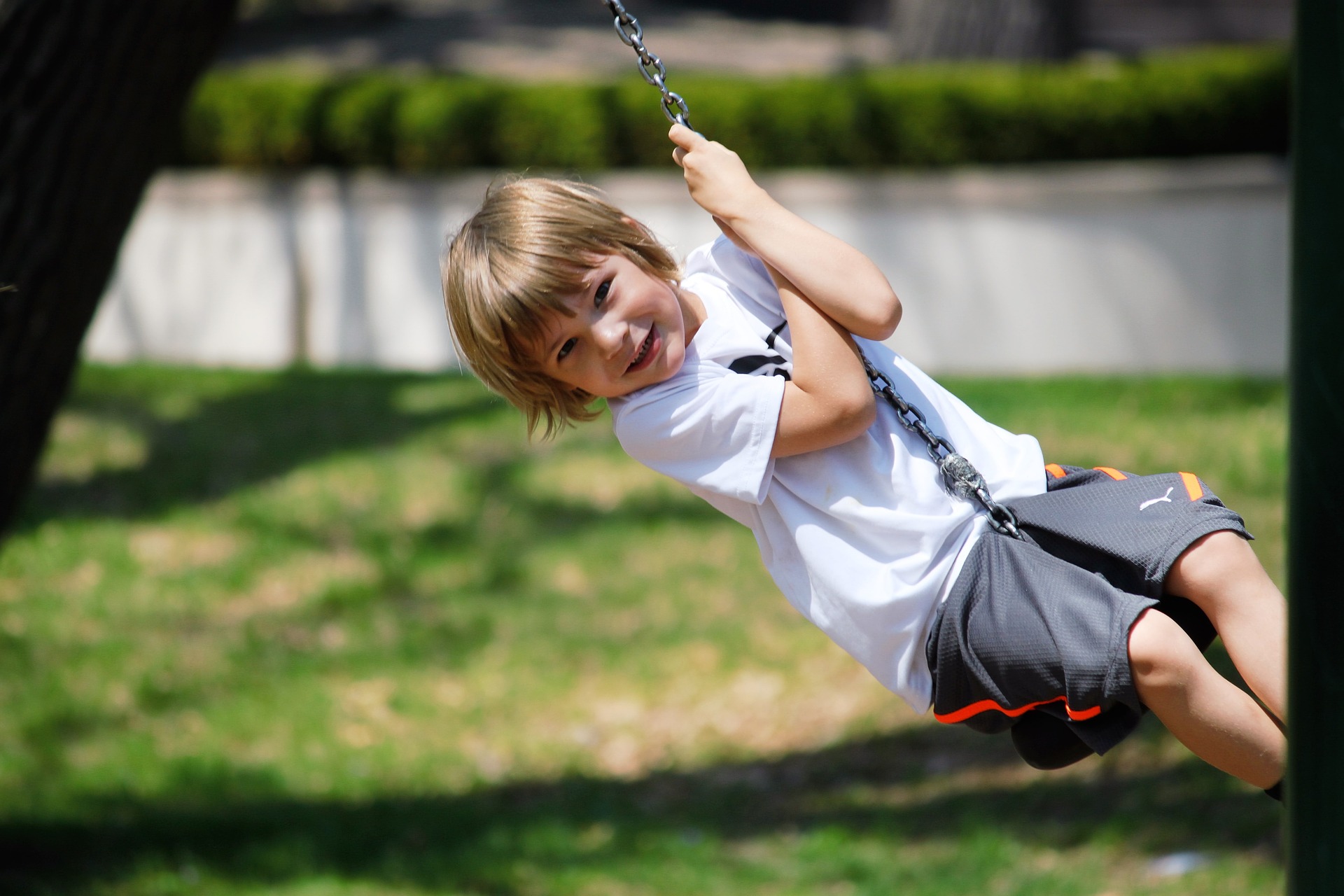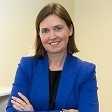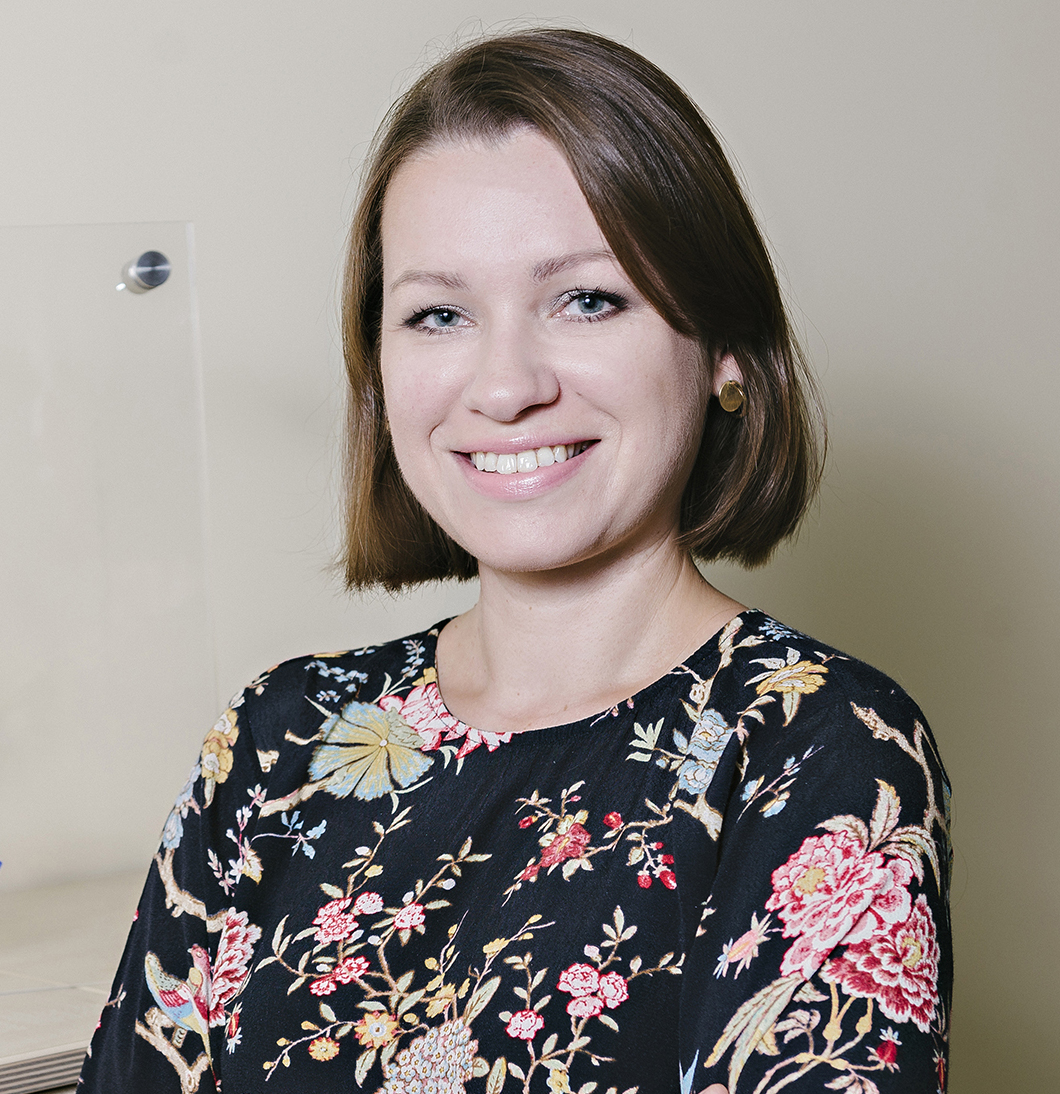Chemicals in toys

Young children constitute a very vulnerable group within society and require a high level of protection. The driving force behind ANEC involvement in child safety is to enhance the quality and safety of children’s lives by ensuring that European Standards and legislation provide better protection for children; and decrease the number of accidents in which children are involved.
Children are often unaware of the dangers they face and ANEC is the only European organisation that addresses child safety aspects during the development of standards for consumer products. The ANEC child safety experts monitor that, during standards work, standardisers do not concentrate only on the product, but also on the risks related to cords and packaging of the product (e.g. cords on bags can strangulate a child), and that child safety aspects in product standards follow a hazard and risk analysis.
Work areas
1. Toys
Toys are used by children everywhere. It is therefore crucial for ANEC to follow the preparation of European Standards on toys. Toys are subject to EU legislation and fall within the scope of Council Directive 2009/48/EC “Safety of toys”.
The most important issues for ANEC to monitor and address in the field of toys are the implementation of the Toy Safety Directive and the drafting, revision, or amendment of standards for toys. As toys are part of a vast international and regional trade, ANEC also monitors international standards work on toys.
2. Child care articles and children's furniture
The reduction of risks associated with the use of childcare articles (pushchairs, carry cots, baby carriers, sleeping bags, …) and children’s furniture (cots, cribs and cradles, …) is of particular importance, because these products are designed to be used by young children. ANEC therefore follows the standardisation of products designed to ensure and facilitate seating, bathing, changing and general body care, as well as sleeping, transportation and protection of young children.
For the moment, childcare articles and children’s furniture are not subject to a specific regulation and fall under Directive 2001/95/EC on General Product Safety.
The most important issues for ANEC to monitor and address in the field of child care articles are the drafting, revision, or amendment of standards for these product groups, and to lead the way for a hazard-based approach during the work.
3. Playground and other recreational equipment
Play is essential to a child’s development. Playground and other recreational equipment must be safe for children to use. ANEC participates amongst others in the standardisation work for playground equipment, trampoline parks, water play equipment, inflatable play equipment, water slides, domestic swimming pools and portable football goals, focusing on terminology, requirements for safety, fitness for purpose, test methods, marking, installation and maintenance, surfacing and accessibility (play for all).
At the moment, playground equipment is not subject to a specific regulation, and falls under Directive 2001/95/EC on General Product Safety.

4. Products to be worn by children
The ANEC Child Safety WG is involved in the standardisation work related to the products that are worn by children, such as children’s clothing and shoes, helmets and buoyant aids for swimming
5. Other issues relevant to child safety
ANEC also monitors the standardisation of other products and follows issues which are related to child safety and/or pose a threat to child safety, such as child protective devices, child-resistant cigarette lighters, packaging, cords on window blinds, child appealing and food-imitating products, chemicals in products, access to button cell batteries etc.
6. Market surveillance
European legislation and European standards are of no use if they are not properly enforced. ANEC monitors and participates as stakeholder in European coordinated market surveillance activities related to child safety.
Activities in the European & international standards bodies
Full participation in following Technical Committees:
- CEN TC 33 WG 3 TG 3 ‘Window blind cords’ (work completed)
- CEN TC 52 ‘Safety of Toys’
- CEN TC 52 WG 3 ‘Mechanical and physical properties’
- CEN TC 52 WG 3 TG 2 ‘Cords on toys’ (work completed)
- CEN TC 52 WG 10 ‘Activity toys’
- CEN TC 52 WG 14 ‘Age determination guidelines’
- CEN TC 52 WG 10 TG 1 ‘Ride-on-toys’
- CEN TC 122 WG 1 ‘Anthropometry’
- CEN TC 136 WG 3 ‘Water slides and water play equipment’
- CEN TC 136 WG 17 ‘Trampoline parks’
- CEN TC 136 WG 22 ‘Gymnastic and playing field equipment’
- CEN TC 136 WG 22 TG 1 ‘Multi-sports equipment’
- CEN TC 136 WG 22 TG 3 ‘Goals’
- CEN TC 136 SC 1 ‘Playground equipment for children’
- CEN TC 136 SC 1 WG 1 ‘Surfacing’ (work completed)
- CEN TC 136 SC 1 WG 13 ‘Safety requirements and test methods’ (work completed)
- CEN TC 207 WG 2 ‘Children’s and nursery furniture’
- CEN TC 248 WG 20 ‘Safety of children’s clothing’
- CEN TC 248 WG 34 ‘Textile child care articles’
- CEN TC 252 ‘Child Care Articles’
- CEN TC 252 WG 1 ‘Seating and body care’
- CEN TC 252 WG 2 ‘Sleeping, relaxation and lying down’
- CEN TC 252 WG 3 ‘Wheeled transportation’
- CEN TC 252 WG 4 ‘Early learning and protection’
- CEN TC 252 WG 6 ‘General and common safety specifications’
- CEN TC 252 WG 6 TG 2 ‘Mechanical and thermal hazards’
- CEN TC 252 WG 6 TG 3 ‘Product information’
- CEN TC 261 SC 5 WG 26 ‘Risk of suffocation to children from plastic packaging’ (work completed)
- CEN TC 355 ‘Lighters’ + Ad Hoc Group (work completed)
- CEN TC 398 ‘Child protective products’ (work completed)
- CENELEC TC 61 WG 7 ‘Electric Toys’
- CEN-CENELEC SRAHG ‘Toys’
- ISO TC 61 SC 4 WG 10 ‘Lighters’
- ISO TC 310 ‘Childcare articles’
- ISO TC 310 CAG ‘Chair’s Advisory Group’
Other
- European Commission’s Consumer Safety Network
- European Commission’s Committee under the General Product Safety Directive
- European Commission’s Expert Group on Toy Safety
- European Commission’s Expert Group on Toy Safety – Subgroup chemicals
- European Commission’s Toy ADCO (Administrative Cooperation)
- European Commission’s Coordinated market surveillance activities on the safety of products
Participation by correspondence in following Technical Committees:
- CEN TC 52 WG 3 TG 3 ‘Projectiles’ (work completed)
- CEN TC 136 ‘Sports, Playground and other Recreational Equipment’
- CEN TC 136 WG 26 ‘Outdoor fitness equipment’
- CEN TC 136 SC 1 WG 9 ‘Inflatable play equipment’
- CEN TC 136 SC 1 WG 14 ‘Revision of EN 1176 Parts 2, 3, 4, 5 and 6’ (work completed)
- CEN TC 136 SC 1 WG 15 ‘Revision of EN 1176-7’ (work completed)
- CEN TC 136 SC 1 WG 16 ‘Revision of EN 1176-10’
- CEN TC 136 SC 1 WG 17 ‘Framework for the competence of Playground Inspectors’
- CEN TC 158 ‘Head protection’
- CEN TC 158 WG 4 ‘Helmets for cyclists’
- CEN TC 162 WG 10 ‘Buoyant aids for swimming instruction’
- CEN TC 207 ‘Furniture’
- CEN TC 207 WG 9 ‘Test methods’
- CEN TC 248 ‘Textiles’
- CEN TC 252 WG 5 ‘Child care articles - Feeding, drinking, sucking and similar functions’
- CEN TC 364 ‘High Chairs and learning towers’
- CEN TC 402 ‘Domestic pools and spas’
- CEN TC 402 WG 1 ‘Pool structure – design, product and installation’
- CEN TC 402 WG 2 ‘Pool water circulation, filtration and treatment’
- CEN TC 402 WG 3 ‘Mini pools’
- CEN TC 402 WG 4 ‘Domestic spas and hot tubs’
- ISO COPOLCO WG ‘Revision of Guide 14 - Product information for consumers’ (work completed)
- ISO COPOLCO WG ‘Revision of Guide 41 - Packaging’ (work completed)
- ISO TC 181 ‘Safety of Toys’
- ISO TC 136 WG 6 ‘Children’s and nursery furniture’
News
Chemicals in toys
Parents and child carers expect toys to be safe to children, often the most vulnerable consumers. Despite improvements introduced by the 2009 revision of the Toy Safety Directive, toys still contain carcinogenic, allergenic and hormonal disrupting substances. Ahead of the review and revision of the Directive, ANEC pressed for the present Directive to be strengthened in respect of its provisions.
In May 2018, we welcomed publication of Directive (EU) 2018/725 for Chromium VI limits in Appendix C of the Toy Safety Directive, having aided the EC in determining the proposed limit values. In October, we welcomed draft rules for formaldehyde and aniline limits and proposals on allergenic fragrances.
During the first half of 2019, we welcomed the decision to draft EU acts to set limit values for aluminium and formaldehyde in toys. The limit values are in line with the ANEC proposals to the EC.
In 2021, we welcomed publication of a Directive amending the Toy Safety Directive as regards specific limit values for aniline in certain toys. The work was initiated by ANEC and the new limits are fully in line with our position paper from 2016.
In April 2021, ANEC published a position paper "Toy Safety Directive evaluation and Chemicals Strategy for Sustainability (CSS): Which way forward?” (see https://bit.ly/3eX0Viu). In the paper, we welcome the conclusions of the EC Staff Working Document from November 2020 on the evaluation of the Toy Safety Directive (TSD) (https://bit.ly/3ylU0qP), which stated that "the Directive’s effectiveness is deficient in several points, in particular on chemicals" which "require urgent attention”. ANEC and BEUC have repeatedly pointed to these deficient provisions, even before adoption of the present TSD, Directive 2009/48/EC. Our view has been supported by several Member States. In our view, particularly Article 46 of the TSD must be changed to allow for the establishment (or amendment) of provisions for all kinds of chemicals and for all kinds of toys, using a comitology procedure. We believe it important to broaden the scope of Article 46, not only with respect to the age range of children using toys, but also to ensure that the revised clause makes it possible to deal with all kinds of chemical provisions, not simply limits for specific substances. In addition, it must be ensured that the EC has the resources to regulate chemicals in toys effectively.
In July 2021, ANEC provided input on the draft European Parliament’s (EP) own initiative report on the implementation of the Toy Safety Directive. As regards the chapter on chemicals, we recommended the addition of some points, in line with our position paper "Toy Safety Directive evaluation and Chemicals Strategy for Sustainability (CSS): Which way forward?”. The EP own initiative report will be used as input for the EC preparatory work in view of a revision of the Directive, for which a draft proposal is expected during Q4 of 2022.
Guidance documents on toy safety
The European Commission and the Expert Group ‘Toy Safety’ develop guidance documents to assist manufacturers, importers, distributors and public authorities in the interpretation and application of the Toy Safety Directive. The guidance documents are not legally binding but they express the views of the majority of the Expert Group's members. ANEC contributed to the following Guidance documents:
- N°8: Guidance document on pools
- N°10 Guidance document on musical instruments
- N°18 Guidance document on puffer balls and similar toys
- N°19 Guidance document on soother holders
- N°20 Guidance document on decorative products and products for collectors
ANEC promotes the value of playground standards in regional training
European standards can improve consumer protection and welfare but only if known and used.
Following the adoption in 2017 of playground equipment standards, EN 1176-1, EN 1176-4 and EN 1177, ANEC co-sponsored the “International Expert Meeting - Outdoor Play”, hosted by the Serbian Association of Landscape Architects in March 2018. The ANEC expert presented the value of the EN 1176 in the design of safer play spaces. Serbian market surveillance authorities expressed particular appreciation of the ANEC intervention. ANEC was influential in shaping the requirements of these standards which offer notable improvements in the protection of children.
A similar conference, ‘Children and the City – Play Spaces,’ also co-sponsored by ANEC, was organised in Prague in October 2018, where our expert explained how standards affect the design of playgrounds and how existing playgrounds can be adapted to the latest standards.
In 2019, the new ANEC President was the main guest at the Czech National conference on European child playgrounds. A national conference “Safe operation of playgrounds and child sports fields”, hosted in Prague in 2021, followed earlier initiatives and was an essential means to raise awareness of these standards and their Czech adoptions, and to achieve their implementation (ČSN EN 1176-7:2020 ‘Playground equipment and surfacing – Part 7: Guidance on installation, inspection, maintenance and operation’).
Trampolines, Trampoline Parks and bouncing facilities
Available accident and injury data shows trampolines to be a growing cause of accidents and injuries among children. Hence, ANEC decided to launch a technical study in 2019 on the reasons for these accidents and to undertake a gap-analysis of the requirements of the standards for trampolines. The results of the study are available at: https://www.anec.eu/technical-studies/recent-technical-reports.
Meanwhile, ANEC was influential in shaping an amendment to EN 71-14 ‘Safety of Toys – Part 14: Trampolines for domestic use’ which extends the scope of the standard to include in-ground (buried) trampolines.
In 2018, CEN TC 136 WG 17 started work on a standard for trampoline parks. ANEC actively participates in the work, using the recommendations from its study.
In addition, the recommendations of our study will also be used in light of the discussions and work on bouncing facilities in playgrounds, in CEN TC 136 SC1 ‘Playground equipment’.
Safe Sleeping Conditions for Children (ANEC Technical Study 2018)
As young children are a very vulnerable group of consumers, especially in their sleep environment, ANEC decided to commission a Technical Study which examined whether standards for several sleep products, mainly for babies, facilitate recognised safe sleeping practices. The report, Investigating Safe Sleeping Conditions for Children, presents the results of the analysis.
The analysis found there are inconsistencies among the standards for products that offer similar functions. The report also presents a review of the potential hazards associated with products that are not covered by standards and makes recommendations on whether ANEC should seek the development of new standards. It recommends that standards be developed for bed nests (as they present soft, padded areas close to the baby’s face); cot beds, especially covering the transition from cot to bed and the bed function; and cots and travel cots supplied with accessories, such as changing tables and bassinets.
The product analysis methodology used in the study could be employed in consideration of standardisation requests (mandates), as it uses a systematic assessment of hazards and risks, and defines key issues related to the development of new standards.
Download the final report of the Technical Study

Publications
To access position papers related to Child Safety please click the link, Position papers.




